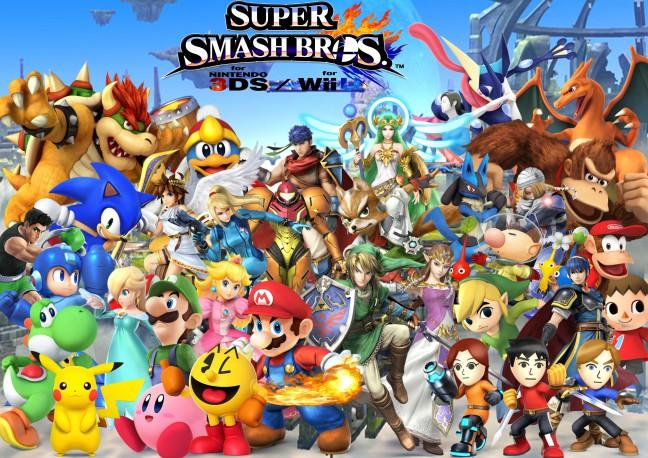I can stop playing “Super Smash Bros.” whenever I want. OK, that’s a lie. Every second of my free time since the 3DS version’s release Oct. 3 has been spent playing the new game.
I should have known this would happen. Last school year with some friends, and for about an hour or two a day during the summer, I would consistently play “Super Smash Bros. Melee” for the Nintendo GameCube without tiring. The only thing keeping me from playing more often was that the game was restricted to wherever the console was located, whether it be in my friend’s dorm room or my parent’s basement. The 3DS version of the game does not have that restriction. On a mobile device like Nintendo’s handheld, there is no escape.
The developers of the game must have known this, and from a company like Nintendo, it should come as no surprise. “Super Smash Bros.” for 3DS is fine-tuned to the system’s architecture. Every game mode is designed to be played in short bursts, with most not lasting any more than 10-15 minutes. The main game mode, the classic Smash mode fans have enjoyed since the Nintendo 64 days, can last as long as you want to. With the ability to fully customize the amount of stocks, items available and time limit, players can fine-tune the game to any given situation.
Virtually every game mode from past “Smash” games makes a return, with a shortened version of the “Classic” mode that ends in the franchise villain, Master Hand. This shows the small changes each game mode has taken to better fit the system it was designed for. The mode you won’t see returning from the last installment in the franchise, “The Subspace Emissary,” is replaced with a brand new mode called “Smash Run.” In this game mode, up to four players start out in a large, open area where they can defeat enemies and complete challenges to upgrade their character’s stats, like speed, attack and defense. After five minutes, all players are brought together for a fight, which is randomized. It could be a normal free-for-all brawl, a race to the finish line or other crazy things like “300 percent Smash,” where all players start at a percentage high enough that a simple punch will send them flying to their death.
As far as the core gameplay, not much has changed. The goal is still to knock an opponent off the stage and make sure they stay there. All in all, that goal is significantly harder than in past iterations. Many characters who would become immobile after using certain moves no longer do, allowing them to use those moves in addition to others to get back to a stage they wouldn’t normally have the reach to return to. And once there, the defending player has a harder time keeping them off the ledge. “Ledge-hogging,” a tactic where one player holds onto a ledge so another can’t get on, has been eliminated: now, if a player is attempting to ledge-hog, they will simply be knocked off the ledge in favor of the player who is attempting to grab it, instead.
While a big change for the competitive scene, these sorts of changes won’t be something regular players notice, as the game remains fun and addicting either way. If anything, it makes the game more enjoyable and accessible to new players, of which are likely to be found in the 3DS’s 44 million-strong userbase wordwide. It helps that virtually every single one of the 50 characters playable in the game feels competitive with every other character in the game, a far cry from the last installment in the series where a single character dominated the game. There’s no doubt that if you pick the game up, there’ll be a few characters who’ll grab your attention and keep you playing.
And if you have tests or papers due soon after you pick it up, don’t worry, I assure you: You can stop playing whenever you want.


